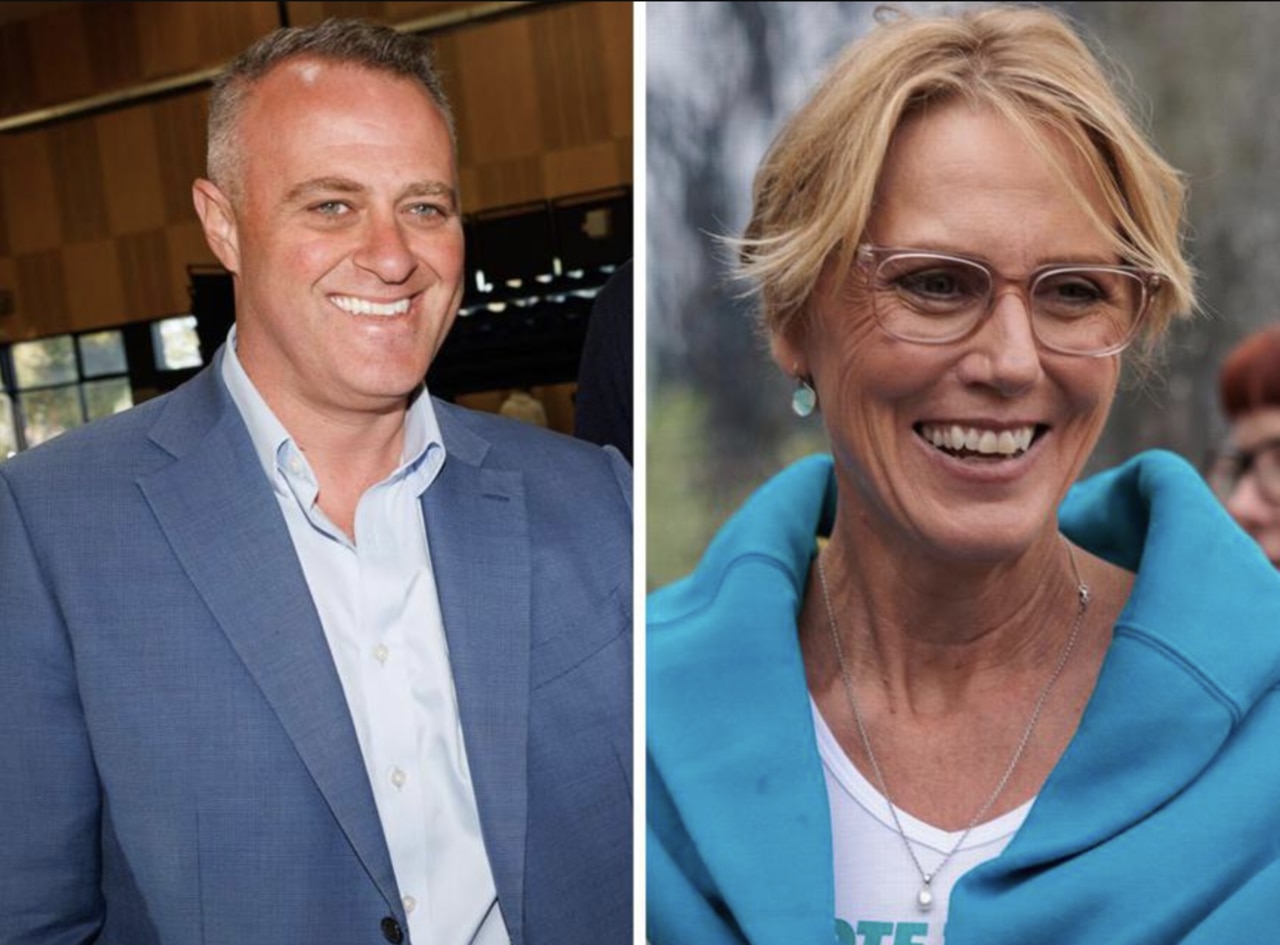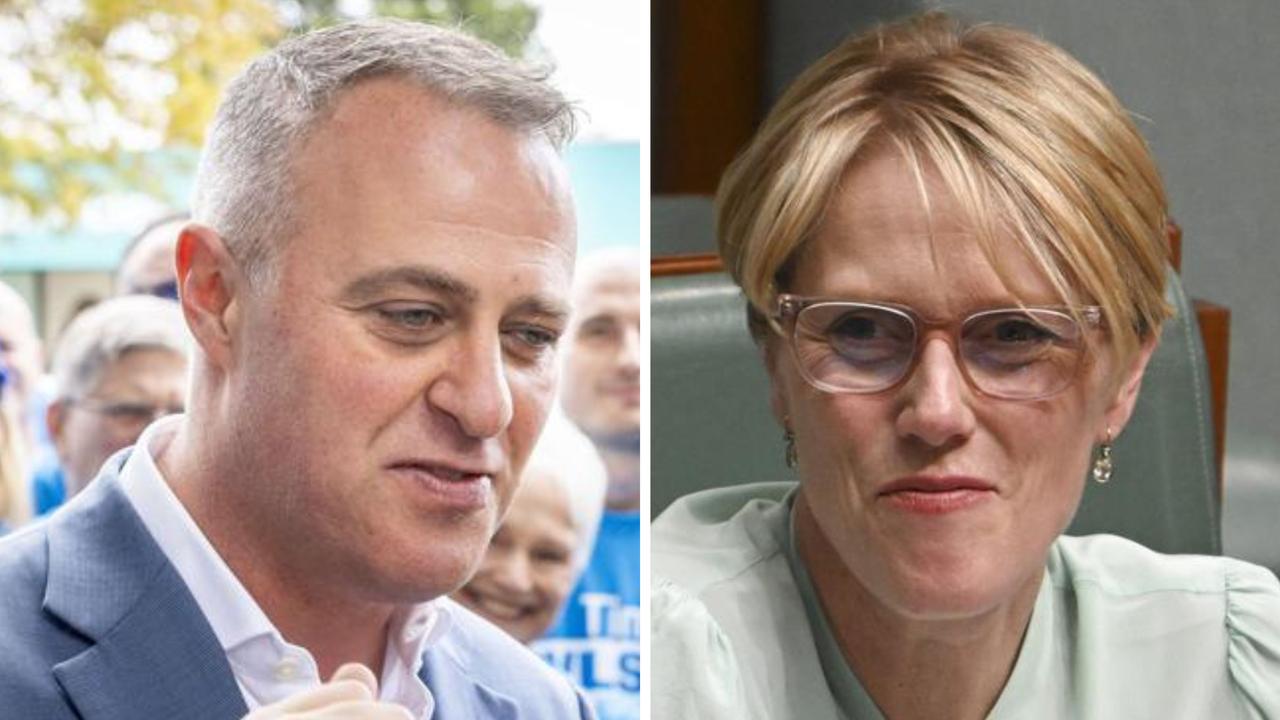Federal election 2022: Data shows Labor, Liberal Party more likely to preselect women in marginal seats
Despite repeated warnings, Australia’s two major political parties continue to make one big mistake – and one MP has issued a scathing rebuke.
Electorates
Don't miss out on the headlines from Electorates. Followed categories will be added to My News.
The women chosen by Australia’s two major political parties to run in the upcoming federal election are predominantly chosen for seats they are unlikely to win.
Shocking statistics gathered by news.com.au reveal a huge disparity in the chances of women entering parliament compared to their male counterparts, with men more likely to be chosen to run for a seat already held by their party.
The above chart shows the distribution of men and women so far nominated for House of Representatives seats in the upcoming federal election. On the left are the Labor Party’s candidates and on the right are the Coalition’s. The orange peak in the middle of both charts shows women are overwhelmingly preselected in marginal seats, where voters are less likely to swing towards a certain party. Whereas the blue dip in the middle of the graph shows men are more often selected for safer seats.
The Labor Party has so far preselected 120 candidates for the upcoming election — 56 women and 64 men.
Of those women, 26 are running in marginal seats, while only 17 men are in the same position.
In comparison, the Coalition has preselected 104 candidates, made up of 29 women and 75 men.
Seventeen of those women are running in marginal seats compared to 19 men. Put another way, almost 60 per cent of female Coalition nominees are running in marginal seats compared to just 25 per cent of preselected men.
This unbalanced distribution has been seen before, including in the 2019 federal election as shown in the chart above.
News.com.au contacted the Liberal, Labor and National parties for comment on the data, but none responded.
NSW upper house Liberal MP Catherine Cusack was not surprised by the data. The outgoing state government MP claimed the tendency to put women up for election in marginal seats was because of “completely self serving” men who head factions that only want women members who won’t rock the power arrangement.
“When women sign on for politics, their goals and their measures of success are completely different to the completely self-serving and brutal factional model of power that is making all the decisions in the modern Liberal Party,” Ms Cusack told news.com.au.
“A few women fight the machine, but success is extremely rare – the boys hold all the cards.”
Preselections are conducted almost entirely by state party divisions and there is therefore significant coordination between the federal and state political arenas.

The likelihood for women to be supported in marginal seats was specifically highlighted and denounced in Sex Discrimination Officer Kate Jenkins’ report into parliamentary workplaces.
“One factor affecting women’s representation in parliament is that women have been more likely than men to be preselected for unsafe seats, that they are unlikely to win, in the House of Representatives,” it found.
The report argued this imbalance was a major obstacle in changing the gender make-up of Australia’s parliament, and in turn slowed down any cultural change within the institution.
The imbalance in how parties preselect their candidates flies in the face of arguments made by Liberal and Nationals party members, who decry gender quotas for being “unmeritorious”, given their tightest races are fought disproportionately by women and not men.
“The (Liberal) Party used to have more adherence to its philosophy of ‘hard work, merit, fairness’ but that’s all gone now. It’s a meeting of a few men who make deals then tell the state executive what to do,” Ms Cusack said.
“The safe seats held by men are not available because as much as they want more women to improve the (party’s) image, the factions don’t actually want to surrender safe seats where they can get away with zero or a low percentage of women. This leaves the marginal (seats). So that’s where you find them.”

Australian National University’s centre for the study of Australian politics director Dr Marija Taflaga agreed with Ms Cusack, saying candidates in safe seats tend to have long careers – most of whom are men, given women were not elected in large numbers until recently.
But this is not a pattern unique to the Liberal Party, according to research from Griffith University.
“From our results, it seems there may be a degree of ‘box ticking’ at work for the ALP. In other words, the party’s need to meet its quota requirements leads it to select more women as candidates, but it does not put them to the same degree as men in seats they are likely to win,” wrote Dr Ferran Martinez i Coma and Professor Duncan McDonnell.
Women an untapped advantage
As time goes on, both major parties may find they are doing themselves a disservice by making the path harder for women.
Griffith University’s research shows female candidates get a slight electoral advantage from their gender.
This reverses a trend seen until at least the turn of the millennium, a point in time until which female candidates appeared to be punished by voters for their sex.

Liberal and Greens women candidates do not see any advantage or disadvantage, and Nationals women candidates still see a slight disadvantage, the research found, the report found.
This shift in Australian voting behaviour lagged behind that in comparable countries such as the US, Canada, and France by about a decade.
This is supported by research that shows Labor and Greens voters, regardless of sex, award an electoral advantage to female candidates in elections, while Coalition voters are largely indifferent.
Research on US elections found women candidates got a minor electoral boost around 1.8 percentage points, simply because they were women.
Dr Martinez i Coma said on this basis, it is possible the Labor Party is deliberately choosing women for marginal seats to maximise the effect of this minor advantage.
“Yes – politically, electorally – the results would point you in that direction,” he told news.com.au.
He also said there may be potential electoral gains for the Coalition if they were to preselect more women.
“Obviously, we do not have the counterfactual but I think they could maximise their odds fielding more women.”
This may be partly because women candidates are often more credentialed or better political campaigners than their male counterparts, Dr Martinez i Coma suggested.
For example, more women in parliament have undergraduate degrees than men do – the margin is small in the Labor caucus (two percentage points) but larger in the Liberal (11 percentage points) and Nationals (14 percentage points) party rooms.
ANU school of politics international relations Distinguished Professor Ian McAllister told news.com.au female candidates tend to perform better during election campaigns.
“We find in our candidate surveys that when women stand they tend to be better and more energetic candidates than men. That is presumably because the barriers for entry are higher for women than for men,” he said.
Originally published as Federal election 2022: Data shows Labor, Liberal Party more likely to preselect women in marginal seats




